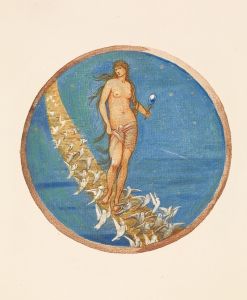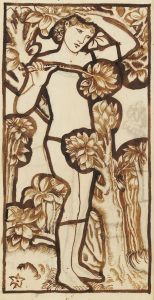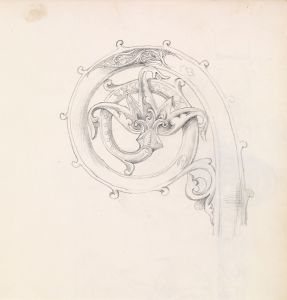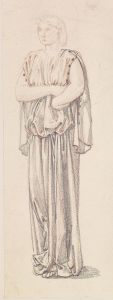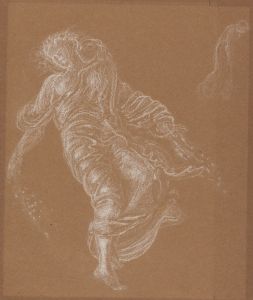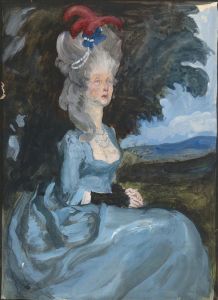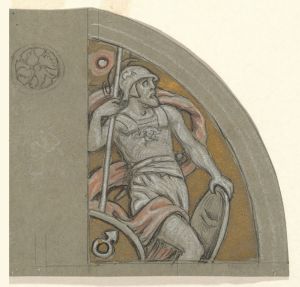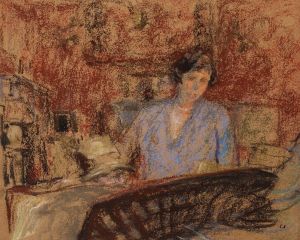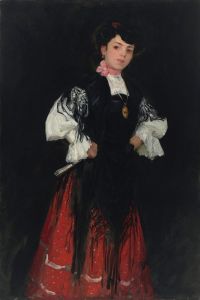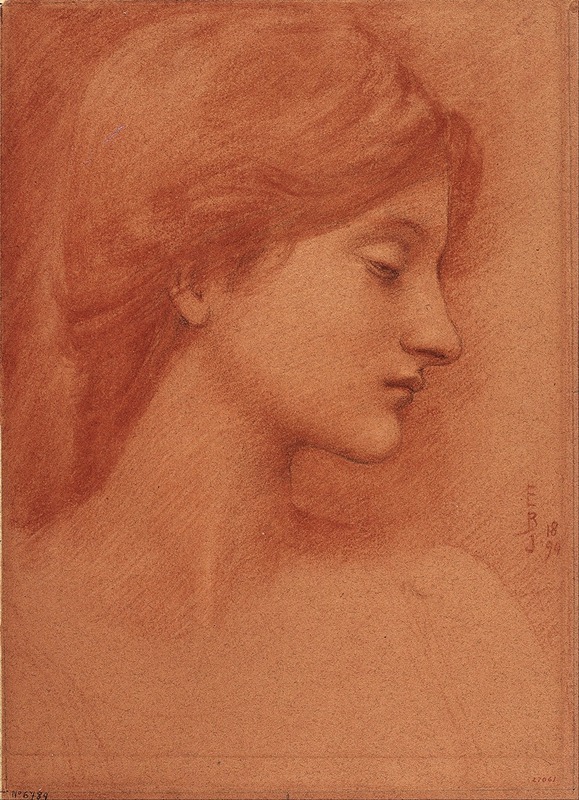
Study of a Female Head
A hand-painted replica of Sir Edward Coley Burne-Jones’s masterpiece Study of a Female Head, meticulously crafted by professional artists to capture the true essence of the original. Each piece is created with museum-quality canvas and rare mineral pigments, carefully painted by experienced artists with delicate brushstrokes and rich, layered colors to perfectly recreate the texture of the original artwork. Unlike machine-printed reproductions, this hand-painted version brings the painting to life, infused with the artist’s emotions and skill in every stroke. Whether for personal collection or home decoration, it instantly elevates the artistic atmosphere of any space.
"Study of a Female Head" is a drawing by the British artist Sir Edward Coley Burne-Jones, a prominent figure in the Pre-Raphaelite Brotherhood, a movement that sought to return to the detail, intense colors, and complex compositions of Quattrocento Italian art. Burne-Jones, born in 1833 in Birmingham, England, was known for his romantic and mythological subjects, often drawing inspiration from literature, medieval themes, and classical mythology.
This particular work, "Study of a Female Head," exemplifies Burne-Jones's skill in capturing the delicate features and ethereal beauty that characterize much of his work. The drawing is executed with meticulous attention to detail, showcasing his ability to render the human form with sensitivity and grace. The subject of the drawing is a young woman, depicted with a serene expression and soft, flowing hair. The focus on the head and facial features suggests that this study may have been a preparatory work for a larger painting or a standalone piece intended to explore the nuances of expression and form.
Burne-Jones often used studies such as this one to experiment with different techniques and to refine his approach to capturing the human face. His studies were crucial in developing the final compositions of his paintings, which often featured idealized figures set in dreamlike landscapes. The Pre-Raphaelite artists, including Burne-Jones, were known for their commitment to realism and detail, and this study reflects those values through its careful rendering and attention to the subtleties of light and shadow.
The medium used for "Study of a Female Head" is likely graphite or charcoal on paper, common materials for studies and sketches during the 19th century. These materials allowed artists to achieve a range of tones and textures, which were essential for capturing the depth and dimension of the human face. Burne-Jones's proficiency with these materials is evident in the delicate lines and shading that define the contours of the subject's face and hair.
Throughout his career, Burne-Jones was associated with the broader Aesthetic Movement, which emphasized art for art's sake and valued beauty and visual pleasure over moral or narrative content. This philosophy is reflected in "Study of a Female Head," where the focus is on the aesthetic qualities of the drawing rather than any specific story or message.
Burne-Jones's work, including pieces like "Study of a Female Head," had a significant influence on the development of European art in the late 19th and early 20th centuries. His emphasis on beauty, craftsmanship, and the revival of medieval and classical themes resonated with contemporaries and later artists, contributing to the evolution of Symbolism and Art Nouveau.
Today, Burne-Jones's drawings and paintings are held in high regard and can be found in major art collections and museums around the world. "Study of a Female Head" remains a testament to his skill as a draftsman and his ability to convey the timeless beauty and complexity of the human form.





